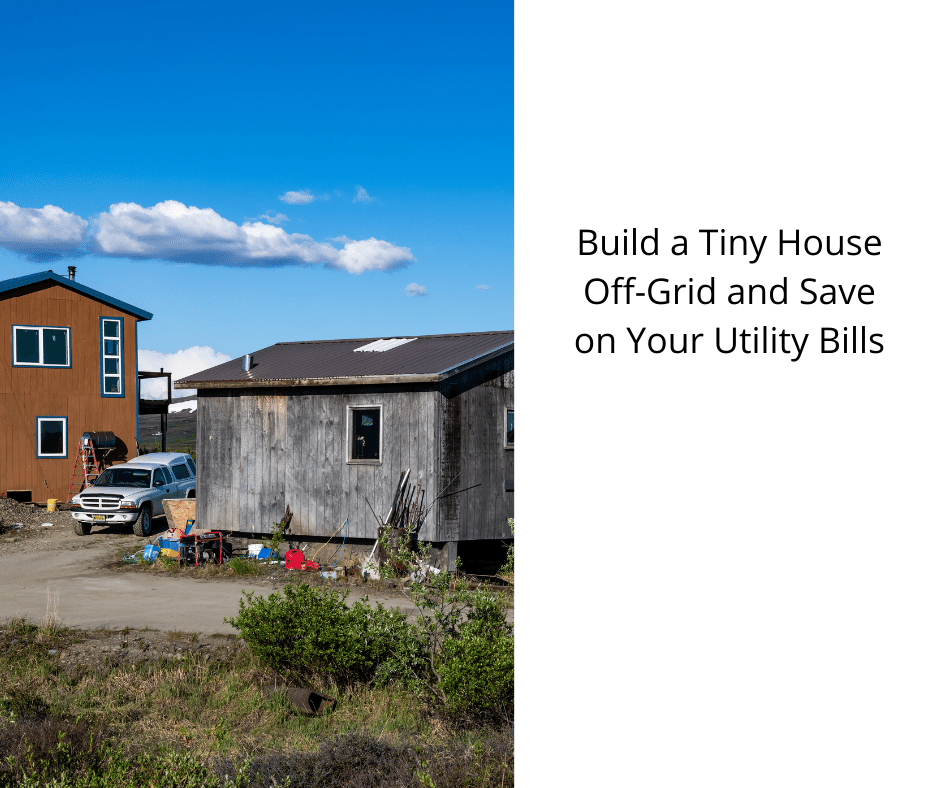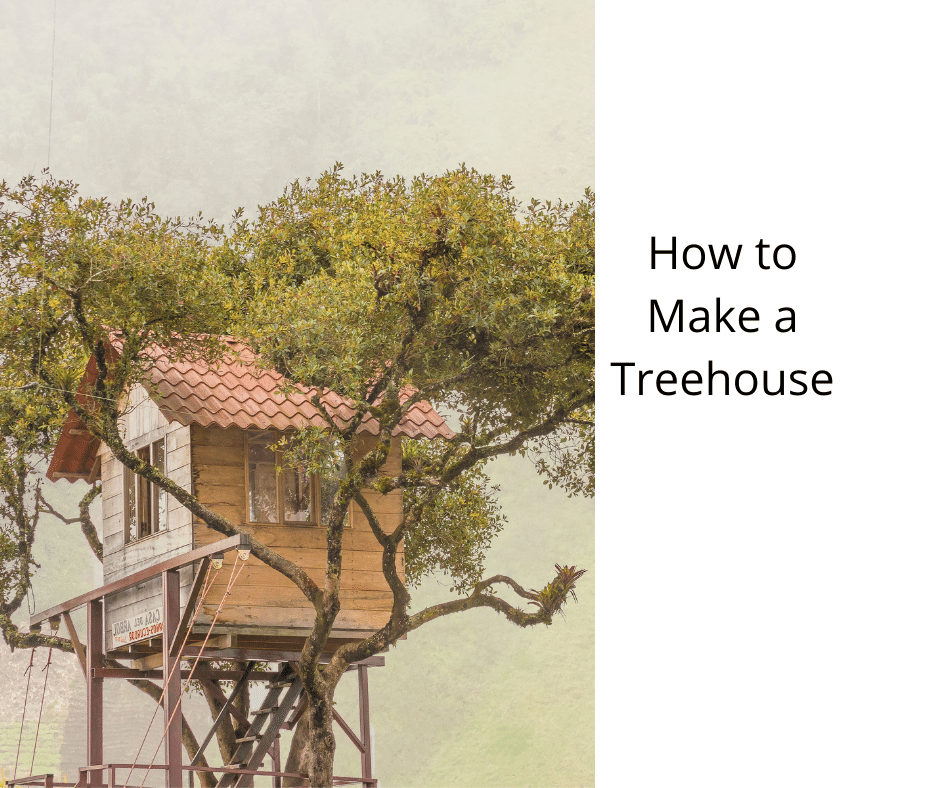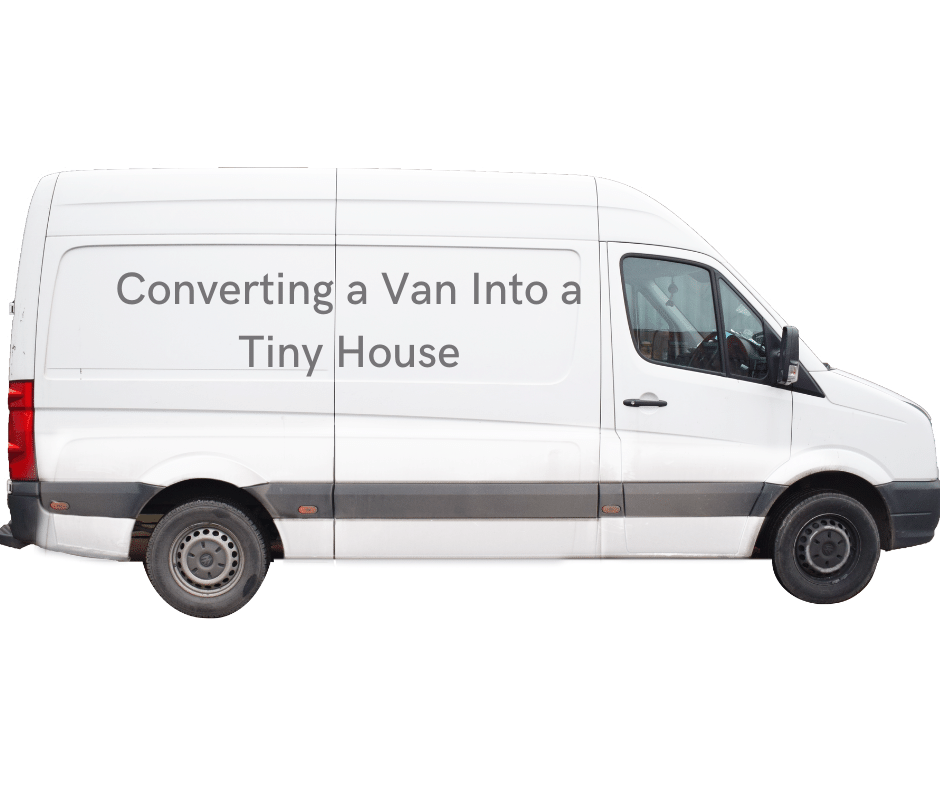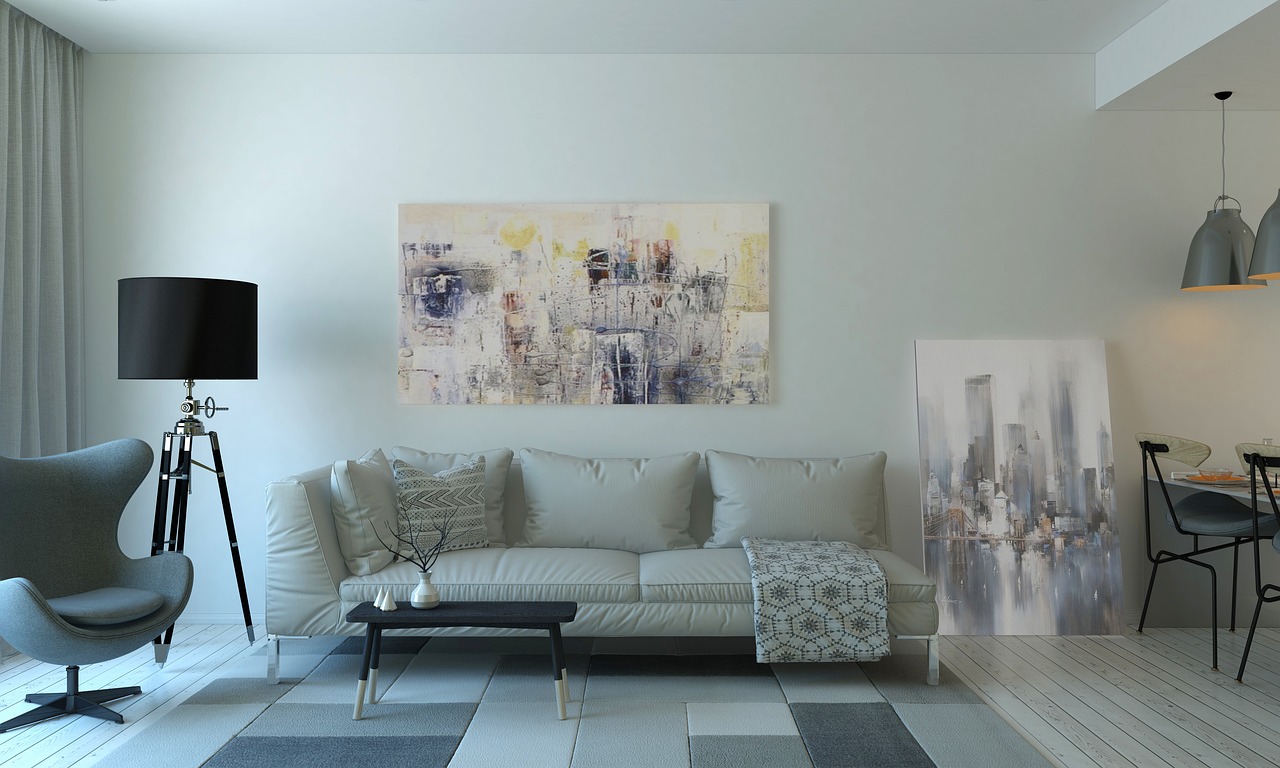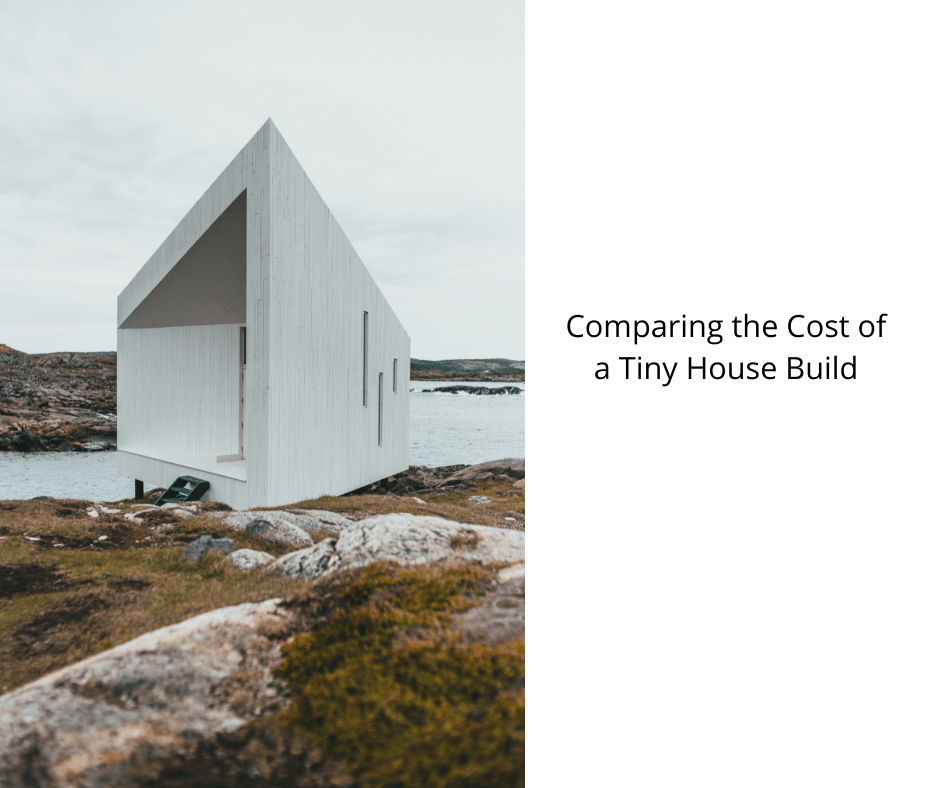If you are considering building an off-grid tiny house, it is worth considering utilizing solar or wind energy to meet your power needs. These sustainable sources of energy store power in battery banks, convert it into AC power through an inverter, and can be set up with just a few essential components. However, it is important to first evaluate the energy requirements of your tiny house to ensure you have an adequate power supply. Avoid underestimating your energy needs, as this could result in an oversized system, strain your budget, or lead to a power shortage before your house is finished.
Solar Panels
If you plan to build a tiny house, one of the first steps you need to take is to decide what type of utility system you need. Solar panels for tiny houses are typically designed to work like standard rooftop systems. They provide the electricity the tiny house needs first, and any surplus will be sent back to the utility grid. Many utility companies offer net metering incentives for their customers who use solar electricity to power their homes. In return, you get credits that you can draw from their grid when needed.
You can choose to install your solar panels on the roof or ground, and the location of the solar cells must be oriented toward the sun. Ground-mounted solar systems are usually more convenient, as they are easier to install and access. Most people think of placing solar panels on the roof. Although this is a classic way to mount a solar system, it is not practical for smaller houses. Instead, consider building a ground-mounted solar system to produce the energy you need.
You need a charge controller and an inverter to connect your solar panels to your power grid. The inverter converts DC to AC options. If you have a PWM charge controller, it is necessary to wire your panels in series. This method reduces line loss, essential if you plan to live off-grid in your tiny house. You should also ensure your batteries are charged before you start wiring the system.
Choosing the right solar panel kit can help you make the best choice for your tiny house. Choose a solar panel kit that is easy to install. The Renogy 4200-watt solar kit is an efficient solar solution for tiny houses. It includes a 4200-watt Monocrystalline solar panel, PWM negative ground charge controller with LCD, and a 30-foot 10 AWG MC4 adaptor kit with Tray Cables. This solar kit is easy to use and expand.
Gas Generators
When preparing to live off the grid, it is helpful to have a backup power source. Many types of gas generators are available, and many businesses manufacture them. Honda, Yamaha, Dometic, and other companies produce gas generators that can be used in tiny houses. The Honda EU 2000i gas generator has some benefits and drawbacks. Here are some things to keep in mind if you’re looking for one.
A propane-powered generator can be used for cooking, heating, and hot water. It can also be used as backup power for off-grid solar systems. However, cooking is a high-energy hog and can quickly drain the battery storage of a small solar power system. Propane generators may be needed to cover higher energy demands, including for air conditioning. If you’re using propane for cooking, you can consider installing a propane tank on the trailer.
A gas-powered generator will require fuel, but the costs can be low initially, especially compared to electric models. The fuel required will depend on the kW capacity of the generator, the size of the loads it will need to power, and its frequency of use. Before buying a gas generator, review the spec sheet to understand how much fuel it will use. Electric generators may be a better option if you’re planning to use it sporadically.
In addition to saving on electricity bills, a gas generator can also power basic needs in a tiny house. Avoiding trips to the power company can save you time and money. A tiny house generator can also keep you warm by running a blow dryer. It can also power a clothes dryer and an air conditioner. A gas generator can also power multiple loads. If you’re looking for a backup power source for your tiny house, consider buying a 1500-watt generator. You can also purchase propane to heat the home.
Composting Toilets
Composting toilets might be the best solution if you’re looking for a way to cut down on your utility costs while maintaining your off-grid lifestyle. These toilets do not require water or plumbing and can even look clean. They are environmentally friendly, as they turn waste into a cycle and don’t produce any odor. Composting toilets are a popular choice among tiny house dwellers. However, there are some things you should keep in mind when selecting a composting toilet.
The best composting toilets are not cheap. They range in price from a few hundred to over a thousand dollars. However, they can help you cut down on water consumption and energy bills and are a great way to conserve water. These toilets are energy-efficient and use less water per flush. The Nature’s Head compost toilet has a compact design and separates liquid and solid waste. It is also waterless and odorless. Its dimensions are 450 mm wide, 546 mm high, and 475 mm deep.
Another option is a remote composting toilet. The latter is often more expensive and requires a little maintenance but is ideal for living off the grid. Composting toilets is a great way to reduce your environmental footprint, and they can even be used in rural areas where there is no water or sewer supply. Fortunately, many of these toilets can also be used with an on-site greywater treatment system to minimize your waste disposal expenses.
Remember that space is at a premium when choosing a composting toilet for your tiny house. Using a composting toilet will reduce your water bills, as well as your carbon footprint. You can also buy a composting toilet for your RV if you can afford the initial outlay. Purchasing the correct toilet is essential for the success of your tiny house utilities. In the end, choosing a composting toilet for your tiny house is a matter of preference.
Off-Grid Options
There are many options for off-grid living, including solar panels, composting toilets, and biodiesel generators. These options can be advantageous for the environment and can make off-grid living more sustainable all year round. Before you make any decisions about off-grid utilities, you need to consider the area where you live. It’s also wise to consider the risks and regulations of the area.
Solar or wind power often supplies off-grid power for a tiny house. Solar panels generate DC power that is converted to AC by an inverter. This system is easy to install and maintain, but you should calculate your power consumption to determine how much power you will need. Overestimating your power needs will increase your costs and you may not have enough energy at the end of the day. Alternatively, you can use batteries to generate power while using wind and solar energy.
Off-grid homes are generally located on undeveloped land or in remote locations. Although off-grid living may seem cost-effective, the upfront costs are significant. Fresh water supplies may need to be drilled or brought in from an external source. Another option is collecting rainwater, which can be harvested from the surrounding area. Some off-grid homes have composting toilets and autonomous septic systems to reduce municipal waste management.
Some companies offer off-grid kits for tiny homes. One of these kits is called the Solar Cabin. It is available for thirty-nine thousand dollars and includes solar panels and a wood stove. This kit is a spin-off of Living Homes. The company focuses on energy efficiency and offers kits that can be tailored to fit off-grid conditions. This off-grid option is ideal for those who want to live off-the-grid but don’t want to live a life of isolation. There are many options available to you in the United States and abroad.
Water Sources
If you’re considering building a tiny house, you should decide how to provide its water supplies. You should collect rainwater where possible to provide water for your tiny home. You can also dig a well for this purpose. Solar power and wind energy are commonly used as sources of energy. The energy is harvested and stored until it’s needed. Knowing how much energy your tiny house will need is important before you begin construction.
Small homes can either be on the grid or off the grid. On-grid homes have access to a standard water source. Off-grid homes, on the other hand, are typically located in rural areas where there is no traditional water source. The system for your tiny home may vary depending on where you plan to live. But regardless of where you live, finding water sources that fit your needs is possible.
Choosing a water source for your tiny house depends on the location and climate you live. You might consider a rainwater collection system if you’re in a rainy region. These systems collect rainwater and filter it. The filtered rainwater is excellent for cooking and cleaning. The filtered water can also be used for flushing your garden. This hybrid plumbing system is quickly becoming popular for tiny house owners.
If you’re building a tiny house near a town’s water line, you should consider the water source for your tiny house. This way, you won’t have to worry about getting ice in your water lines. Another solution is to connect the water supply inside the house, which can keep the pipes clear. If you’re living in a tiny house close to your main home, you can also use an extension cord from your existing home for power. You can also connect your tiny house to a water supply using a quality garden hose, which you can reuse.
I’m Theodore, and I love tiny houses. In fact, I’m the author of Tiny House 43, a book about tiny houses that are also tree houses. I think they’re magical places where imaginations can run wild and adventures are just waiting to happen.
While tree houses are often associated with childhood, they can be the perfect adult retreat. They offer a cozy space to relax and unwind, surrounded by nature. And since they’re typically built on stilts or raised platforms, they offer stunning views that traditional homes simply can’t match.
If you’re looking for a unique and romantic getaway, a tree house tiny house might just be the perfect option.
